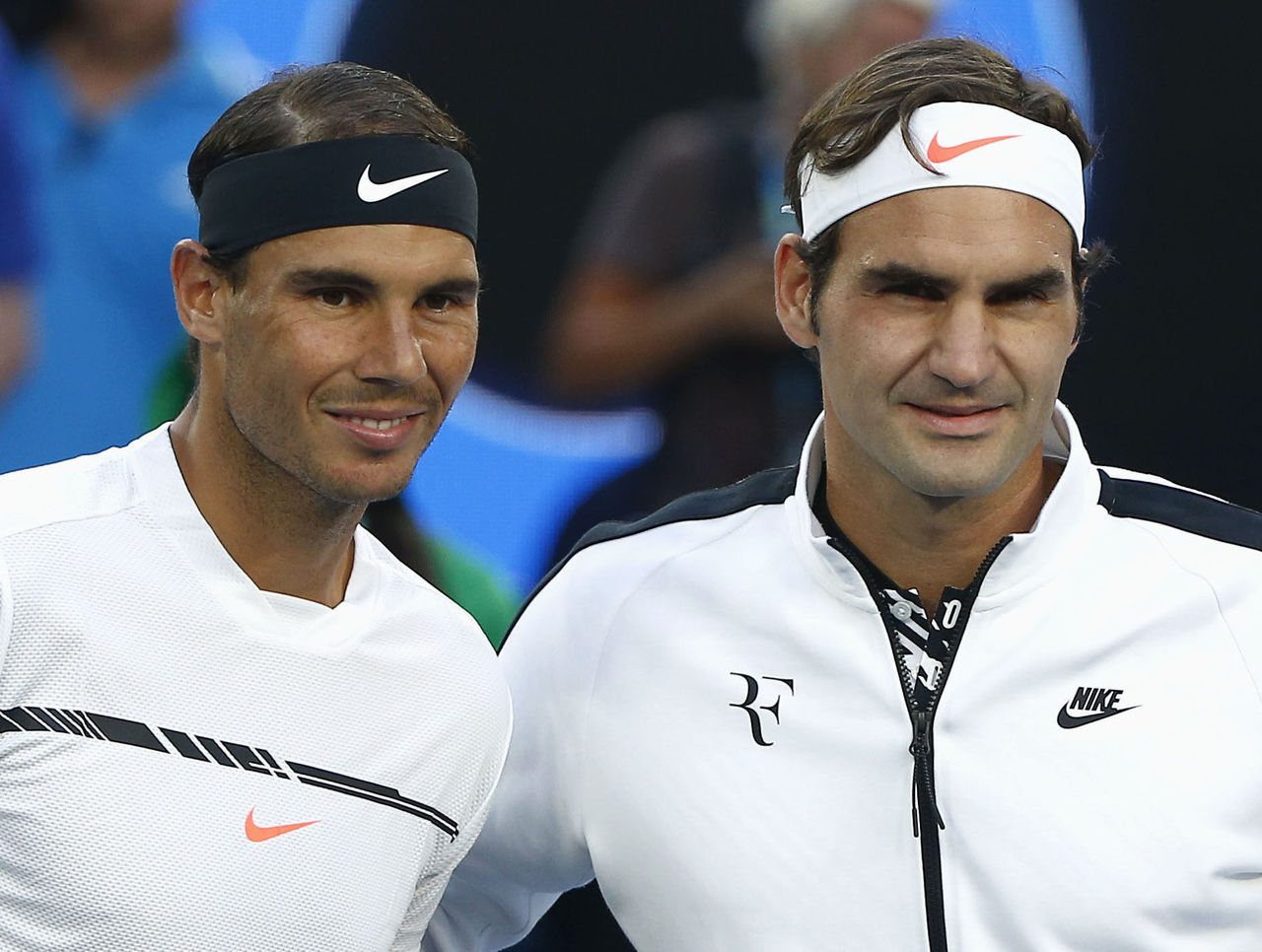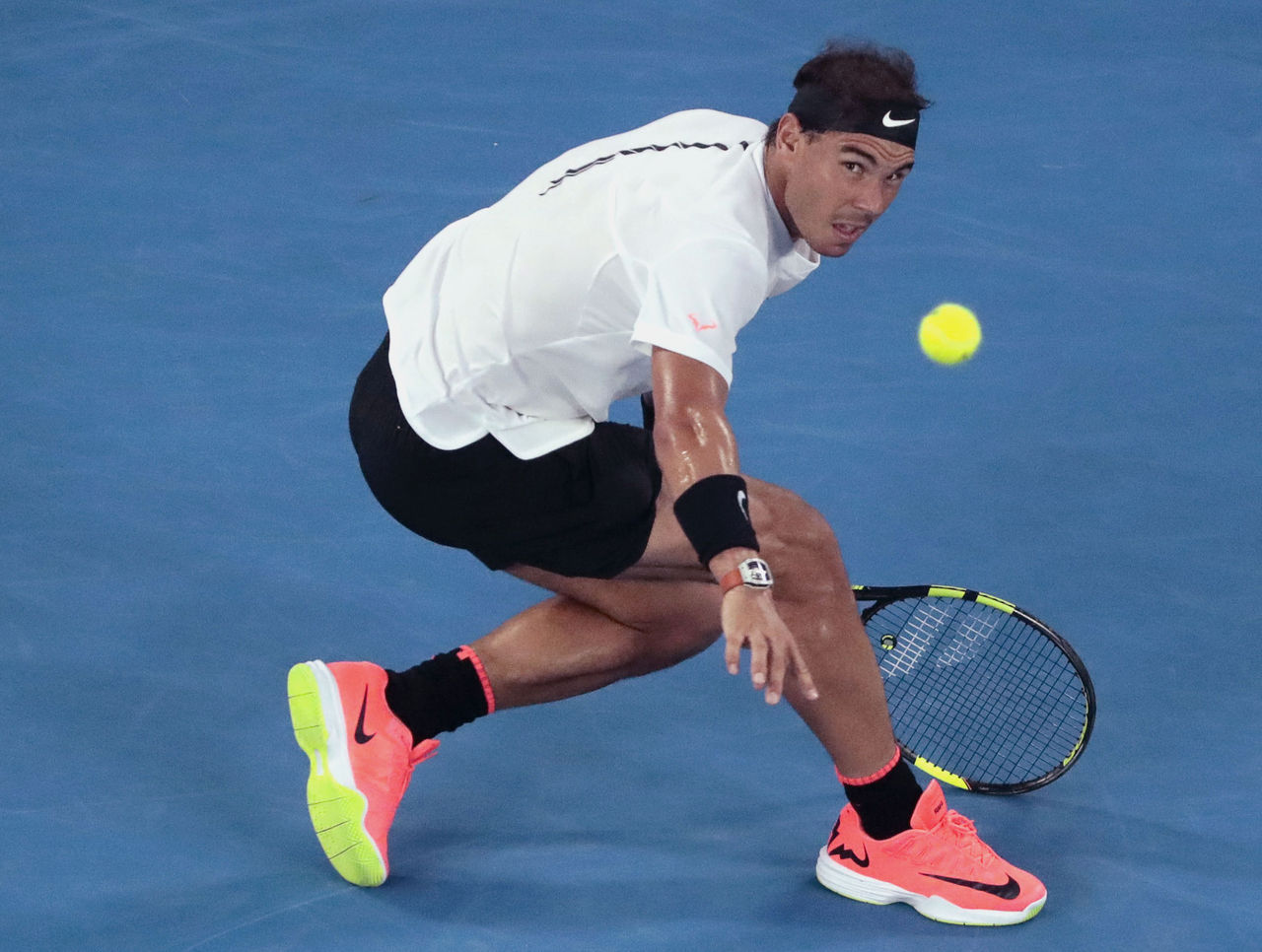The Federer-Nadal final was everything we hoped it could be
From the start, the whole thing felt surreal. Even while it was happening, as one set bled into the next, and they whacked balls back and forth for one, two, three hours, and beyond; even after it was over and Roger Federer and Rafael Nadal were standing together on the podium again, the scene felt half-imagined.
There was the way each player looked, the images tailor-made for then-and-now retrospectives: Nadal's old capris turned to shorts hiked up his thighs, his shaggy shoulder-length mane turned to rapidly vanishing wisps, his tank tops turned to T-shirts. And Federer, well, Federer mostly looked the same, though his cheeks had thinned out almost as dramatically as Nadal's hair. In a tournament that had started out with the most familiar of expectations, here was a relic from the past, breathed back into life by some unknowable force.
If there was overwhelming excitement, there was also uncertainty. It had been so long since they'd played a match on this stage. What would it look like, feel like, after all that time?

Saying absence makes the heart grow fonder is another way of saying absence makes perception less reliable. Absence creates room for selective memory; for false narrative, sentimentalism, and exaggeration. There's a decidedly human impulse to romanticize the past, whether that past was any good or not. Looking back wistfully is always easier than looking toward the uncertain future, or looking at ourselves with clear eyes in the present.
What if the Federer-Nadal final wasn't all we'd dreamed? What if one or two corkers, like the 2008 Wimbledon final, had clouded the fact that it was never really the rivalry we wanted it to be - that it was actually pretty lopsided, and that both were clearly more dominant on one particular surface? We'd been dreaming of this final for so long, whispering furtively about its possibility so as not to jinx it, sighing exasperatedly when it failed to materialize, wondering for so long if we'd ever see it happen again ... What if our hearts had grown so fond in its absence that we'd mischaracterized the whole thing? What if we'd imagined something that, like a phantom limb, wasn't actually there?
But then there they were, sharing a court in a Grand Slam final again, and you realized quickly that the romanticism about their rivalry wasn't really about numbers, or head-to-heads, or even necessarily the quality of tennis. It was about their collective force of personality, and the way they let their wholly unique games speak through them. It was about their contrast in style and temperament, the way Federer can make things look frictionless while Nadal can make the same things look ferociously physical. And yes, it was about familiarity and comfort - things we always crave, but particularly so in times of fear and uncertainty. For a few hours, we got to just live there, with Federer and Nadal, and with our memories.
But this wasn't just nostalgia. It really was amazing, wasn't it? Even if it was a bit messy, and even if the two rarely both played their best at the same time. They traded sets back and forth, traded momentum as freely as they traded groundstrokes, and the rapidity and frequency of the pendulum-like swings was almost nauseating. For parts of the match it looked like Nadal could hardly move, and at other parts it looked like he couldn't be slowed down. At moments Federer couldn't miss, and at other moments he couldn't find the court.

Then finally, in the fifth and deciding set, they had a tremendous tussle. Back and forth they went, nearly every game reaching deuce, nearly every point played with life-or-death desperation. It was the third five-setter each had played in the tournament, and somehow neither looked much worse for wear. They saved some of their best tennis for last, and though it ended with a seemingly one-sided score of 6-3, it was one of the most taut, captivating sets they've ever played.
As he had virtually all match, Federer hit his backhand as well as he's ever hit it against Nadal. He took the ball early to catch it low, and sent flat one-handers screaming cross-court. Almost any time Nadal left the ball even a little bit short to the ad court, Federer would step inside the baseline and unload from that wing. He hit lashing backhand return winners and some mind-bending forehands, including a couple short-hoppers from the back of the court that were effectively baseline half-volleys. He changed up his service patterns masterfully, alternating location and spins, keeping Nadal guessing throughout. He finished with 73 winners, including 23 in the final set.
In many ways, Nadal was vintage Nadal, too; with his unshakable resolve, the way he kept getting up off the mat, making Federer work for everything; the way his forehand started popping off once his back was against the wall; the preposterous lunging stab-slice winner he hit to consolidate a break in the fourth set; the tenacity and bravery with which he saved break points, particularly in the final set when he came under relentless Federer pressure on all of his service games. He saved the first six break points he faced in the set, five of them with winners.
Federer had to rebound from dropping an early service game in the fifth, and after he reeled off three straight games of his own to take a 4-3 lead, he had to watch Nadal erase three more break points, clawing his way back from 0-40 down. It turned what looked like a sure break into a wild back-and-forth game, capped by a mesmerizing, 26-shot deuce-point rally. But Federer finally won that rally with a gorgeous forehand winner, and clinched the break three points later with a dipping, short-angled backhand slice return that Nadal couldn't handle.
Nadal, as was custom, immediately jumped ahead in the ensuing game, with Federer serving for the match, and earned two break points of his own. This time it was Federer's turn to bounce off the ropes. He hit an ace, then an inside-out forehand winner to get to deuce, then forced a Nadal error to get his first championship point, set up a second one with an ace, and sealed it with a line-clipping forehand winner.

As Nadal challenged the shot he seemed to know had landed in, we all got a moment to register what had happened. At the age of 35, playing his first tournament in six months following the first significant injury of his career, Federer had finally captured his 18th major title - his first in a half-decade, his white whale - over his longest-standing and greatest adversary. The Hawkeye review confirmed the shot was good, and then came Federer's ebullient, tearful celebration, followed by a trophy ceremony wherein he insisted that he would've been just fine accepting a draw or a loss to Nadal, and even seemed to mean it. Whether or not there are more Slams in Federer's future, this was the one that seemed like the culmination of his career's work.
At the end, of course, it was just tennis, and tennis is not going to bind up the world's wounds. The most that can be said for tennis is that it's an enjoyable thing that exists in the world, mostly free of far-reaching consequence, that can make us feel positive feelings, and often reflects the ability of humans to do the improbable. That is all we could've hoped for from this match, and amazingly, this match delivered on its every promise. If absence had made the heart grow fonder, the return of Federer-Nadal made it grow fonder still.
If Sunday's epic were any indication, these two are far from finished. And yet, in a way it feels like we no longer have to hope so desperately, or whisper furtively, or wonder plaintively if we'll see anything like it again. If that were the last match the two play against each other, who could complain?
Asking for anything more at this point would be greedy. Because when we needed something to feel good about, we got Federer and Nadal, and we got this match, and it was perfect.
HEADLINES
- Madrid Open roundup: Sabalenka ekes out 3-setter, Rublev ends skid
- Nadal cruises past American teen in 1st round of Madrid Open
- French Open to inaugurate 2nd retractable roof ahead of Paris Olympics
- Nadal says he's not fully fit, unsure about playing French Open
- Brian Tobin, former ITF president, dies at 93